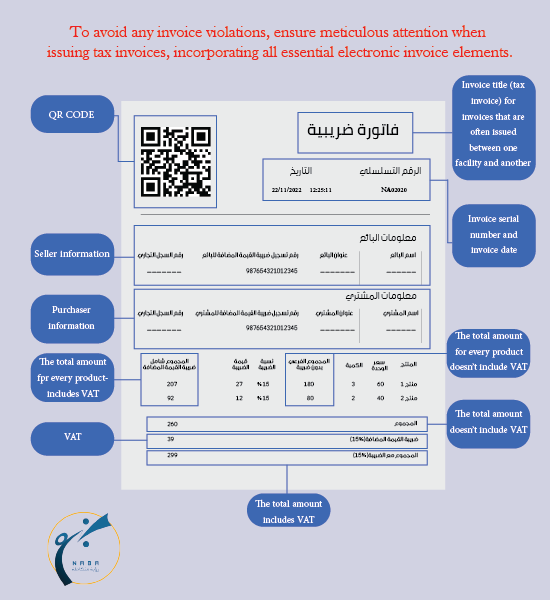E-Invoice
Transition your paper system to an electronic invoicing system through:
- Digital Tax Invoices.
- Exclusion of Handwritten or Scanned Invoices.
- Compliance with Technical Standards.
- Compatibility with the requests of the competent authorities.

WHAT IS THE E-Invoice?
An electronic invoice, pertaining to taxpayers subject to VAT, is a tax document generated and delivered through electronic methods. It is crucial to note that handwritten or scanned invoices do not qualify as electronic invoices. The Professional systems aligns with the established technical specifications for electronic invoices.
Does The Professional System support electronic invoice requirements?
An electronic invoice is a tax-related document generated and transmitted electronically by every VAT-registered taxpayer. It’s important to note that invoices created manually or by scanning paper documents do not qualify as electronic invoices. The Professional systems fully adheres to the currently established technical standards for electronic invoicing.
How to implement electronic invoicing?
The electronic invoicing is implemented in two phases. The first phase, “Issuance and Storage,” began on December 4, 2021. The second phase commenced gradually on January 1, 2023. The electronic solution must integrate with the Zakat, Tax, and Customs Authority system, and electronic invoices must be issued in the required format.
What is the goal of the electronic invoicing system?
It aims to transform (paper invoices and notices) into a complete and organized electronic process that allows invoices and debit and credit notices to be exchanged and processed in an electronic format between the seller and the buyer.
What is a tax invoice?
It is the invoice that contains all the elements of the tax invoice, which is issued from one company to another.
What is a simplified tax invoice?
It is the invoice containing all the main elements of the tax invoice that is issued from a company to an individual.
Does the system print the QR code according to the requirements of the electronic invoice?
Yes, the requirements of the first stage of applying the electronic invoice were strictly adhered to, and thus the code is printed and contains the following data according to the requirements of the first stage:
• The name.
• Establishment.
• The establishment’s tax number.
• Invoice date and time.
• Total invoice.
• Total tax.
Prohibitions in the first stage for electronic use
- Allow the user to delete invoices.
- Issuing invoices that do not have a QRCODE or do not contain all requirements.
- Issuing an invoice via Excel or Word.
- Lack of a system to manage user permissions in the system.
- Allow the creation of more than one sequence of invoices.
What are the requirements for the second stage of electronic invoicing?
- Issuing the invoice in (XML, PDF/A-3) format.
- Tamper-proof features such as (encryption function, digital seal).
- Other technical characteristics (example: Universally Unified Identification Number (UUID).
- Linkage and integration with the systems of the Zakat, Income and Customs Authority.

We are here to help
24/7 Online Assistance
Connect with industry peers, certified partners, and Naba Professionals online to find the information you need to get the most out of your Naba solution.
Expert Help
Want to talk? Give us a call.
Call Us
Saudi Arabia Office: +966-570005134
Egypt Office: +20-0222629724
UAE Office: +971-42596068
Oman Office: +968-91113014
Send an E-mail
info@nabasoft.com
Training And Certification
Learn from the experts and become one yourself. Grow your skill set from anywhere.
Contact Us

About NABA
Naba Soft was established in 2000 as a specialist in all fields of computer technologies. It provides technical support, research, information, hardware, systematic and network support to all governmental and private sector companies and establishments. We have developed the experience that we acquired throughout many years

